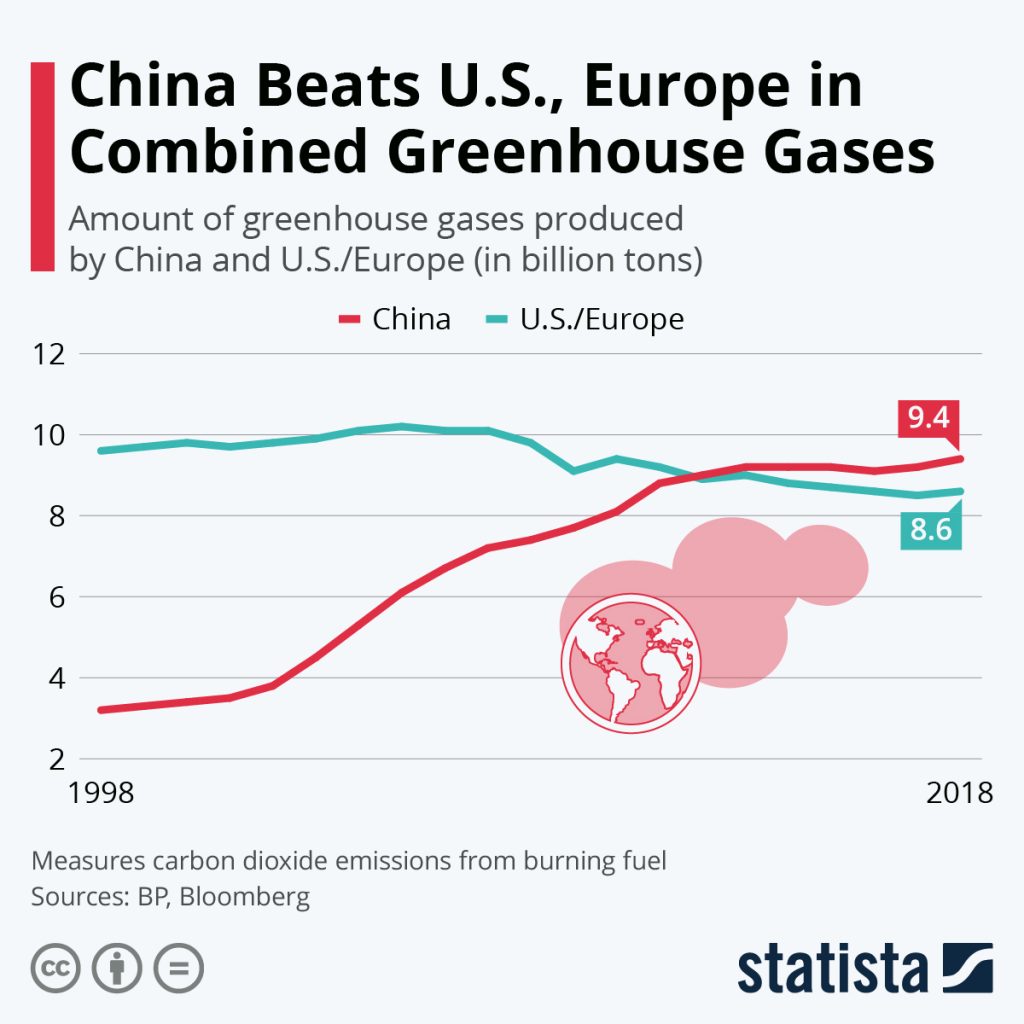Taps Coogan – September 22nd, 2020
Enjoy The Sounding Line? Click here to subscribe for free.
Enjoy The Sounding Line? Click here to subscribe.
To the extent that net greenhouse gas emissions can be accurately measured and attributed to individual countries (not very well) and to the extent that data from China can be trusted (also not very well), China now emits more greenhouse gasses than both the US and EU combined.
Indeed, according to data from BP, China’s greenhouse gas emissions have more than doubled over the last twenty years and are still rising despite its participation in the Paris Accord (which does not limit China’s emissions for another decade). Despite the endless fearmongering, emissions in both the US and EU have been trending lower for several years and will likely continue doing so regardless of how many new “Green” taxes the EU or US think up.
The following chart, from Statista, highlights the trends.

Would you like to be notified when we publish a new article on The Sounding Line? Click here to subscribe for free.
Would you like to be notified when we publish a new article on The Sounding Line? Click here to subscribe for free.


Normal, we sent our factory there to build our stuff and making big margin for the stockholders.
These are production-based emissions, not consumption-based. China exports 20% of its production-based emissions to other countries, i.e., the manufacture the goods they export. Primarily to OECD countries. The US/EU’s claim to have lowered their emissions refers specifically to their production-based emissions; however, consumption has risen in both regions, as has the US/EU’s imports. The US/EU import 10% of their emissions, on a consumption-basis. Applying 20% reduction and 10% premium to the above figures respectively puts the US/EU in the 9.4 range and China in the 7.5 range, which paints a different, i.e., consumption-based, story.
Part of the reason the production moved to China was environmental regulations and cheaper coal based electricity, which has shielded consumers from the actual costs of their policy choices